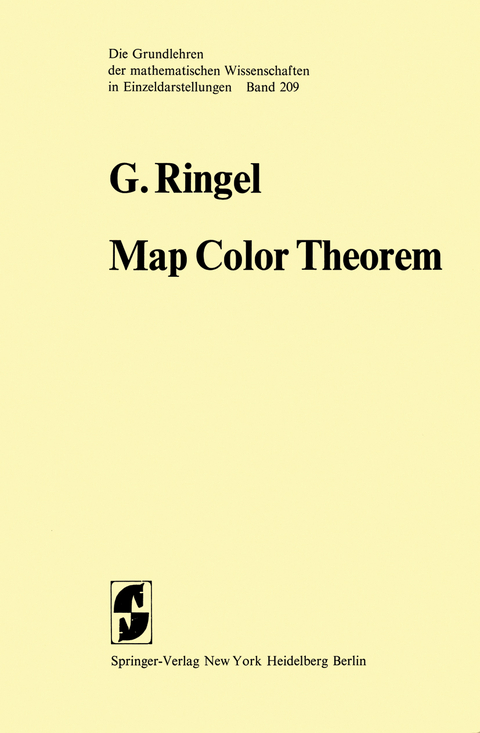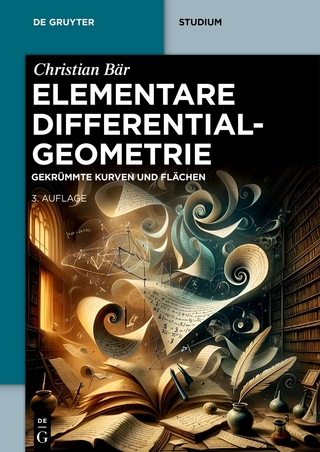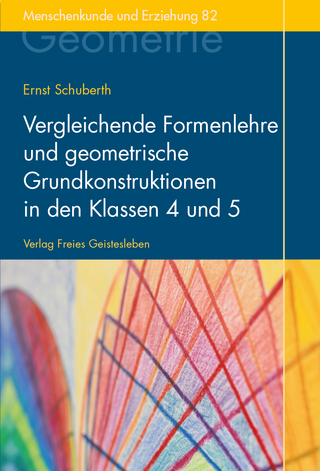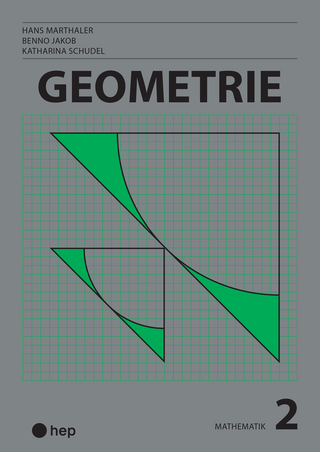
Map Color Theorem
Springer Berlin (Verlag)
978-3-642-65761-0 (ISBN)
1. Problems, Illustrations, History.- 1.1.The Four Color Problem.- 1.2. Map Color Theorem.- 1.3. The Thread Problem.- 1.4. Unilateral Surfaces.- 2. Graph Theory.- 2.1. Chromatic Number.- 2.2. Rotations of Graphs.- 2.3. Orientable Cases 7 and 10.- 3. Classification of Surfaces.- 3.1. The Concept of Topology.- 3.2. Polyhedra.- 3.3. Elementary Operations.- 3.4. Normal Form for Orientable Surfaces.- 3.5. Normal Form for Non-Orientable Surfaces.- 3.6. Standard Models.- 3.7. Partial Polyhedra.- 4. Graphs on Surfaces.- 4.1. Embedding Theorem.- 4.2. Dual Polyhedra.- 4.3. Heawood's Inequality.- 4.4. Genus of Graphs.- 4.5. Non-Orientable Genus of Graphs.- 4.6. Klein's Bottle.- 5. Combinatorics of Embeddings.- 5.1. Triangular Embeddings.- 5.2. Orientable Special Cases.- 5.3. Outline for General Cases.- 6. Orientable Cases 1, 4, and 9.- 6.1. Orientable Case 4.- 6.2. Arithmetic Combs.- 6.3. Orientable Case 1.- 6.4. Coil Diagrams.- 6.5. Orientable Case 9.- 7. Orientable Cases 11, 2, and 8.- 7.1. Example for n=35.- 7.2. Orientable Case 11.- 7.3. The Additional Adjacency Problem.- 7.4. Orientable Case 2.- 7.5. Additional Adjacency Problem.- 7.6. Orientable Case 8.- 8. Non-Orientable Cases (Index 1).- 8.1. Method of Doubling.- 8.2. Non-Orientable Cases 0, 3, 7.- 8.3. Cascades.- 8.4. Orientable Application.- 9. Solutions of Index 2 and 3.- 9.1. Examples and Method.- 9.2. Orientable Cases 3 and 5.- 9.3. Orientable Case 6.- 9.4. Non-Orientable Case 9.- 10. Construction by Induction.- 10.1. An Index 3 Induction.- 10.2. An Index 2 Induction.- 10.3. Non-Orientable Cases 1, 2, 6, and 10.- 11. Orientable Case 0.- 11.1. Currents from Non-Abelian Groups.- 11.2. Examples.- 11.3. General Solution.- 12. Related Problems.- 12.1. Questions about Rotations.- 12.2. Questions about Embeddings.-References.
| Erscheint lt. Verlag | 7.12.2011 |
|---|---|
| Reihe/Serie | Grundlehren der mathematischen Wissenschaften |
| Zusatzinfo | XII, 194 p. |
| Verlagsort | Berlin |
| Sprache | englisch |
| Maße | 152 x 229 mm |
| Gewicht | 314 g |
| Themenwelt | Mathematik / Informatik ► Mathematik ► Geometrie / Topologie |
| Schlagworte | Boundary element method • Form • Mehrfarbenproblem • Proof • Theorem • Topology |
| ISBN-10 | 3-642-65761-3 / 3642657613 |
| ISBN-13 | 978-3-642-65761-0 / 9783642657610 |
| Zustand | Neuware |
| Haben Sie eine Frage zum Produkt? |
aus dem Bereich


